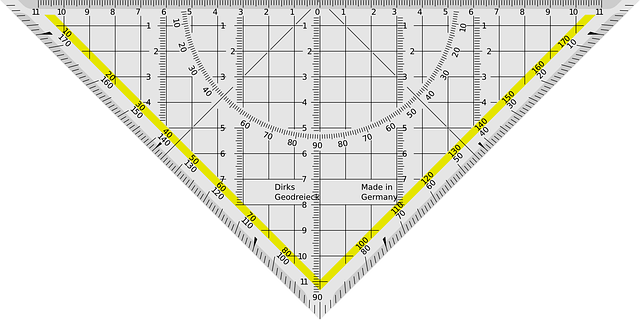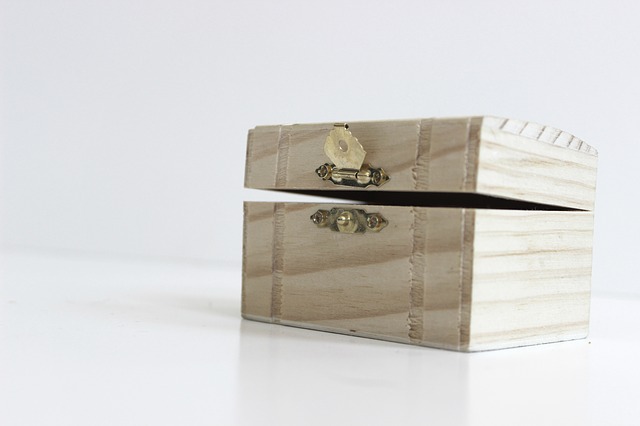How To Write A Personal Travel Blog

If you're applying to graduate school, you'll likely need to write a personal statement. But what exactly is a graduate school personal statement? And what should you write about to give yourself your best shot at admission?
In this guide, we teach you how to write a personal statement for grad school, step by step. But first, let's go over how the personal statement differs from the statement of purpose as well as what schools look for in a great graduate school essay.
What Is a Graduate School Personal Statement?
A graduate school personal statement is an admission essay that typically focuses on your personal reasons for wanting to enter a grad program and particular field of study. Essentially, you must tell the story of who you are and how you developed your current research interests.
So is a personal statement for graduate school the same thing as a statement of purpose? Well, not always (though it can be). Here are the general distinctions between the two essay types:
- Statement of purpose: A formal essay that summarizes your academic and professional background, research interests, and career goals. In this essay, you'll usually explain your reasons for applying to grad school and why you believe the program is a good fit for you (as well as why you're a good fit for it!).
- Personal statement: A less formal essay that focuses on your passion and motivation for wanting to enter your chosen field and program. This statement is typically more flexible than the statement of purpose, with a bigger emphasis on storytelling. Schools often encourage applicants to discuss (relevant) challenges in their lives and how they've overcome them.
Both the graduate school personal statement and statement of purpose are usually anywhere from one to three double-spaced pages long, depending on the program you're applying to.
Below is a chart comparing the personal statement and statement of purpose:
| General Focus | Formality | Length | |
| Statement of Purpose |
| Quick side note: we've created the world's leading online GRE prep program that adapts to you and your strengths and weaknesses. Not sure what to study? Confused by how to improve your score? We give you minute by minute guide. You don't NEED a prep program to get a great GRE score. But we believe PrepScholar is the best GRE prep program available right now, especially if you find it hard to organize your study schedule and don't know what to study. Click here to learn how you can improve your GRE score by 7 points, guaranteed. Formal | Varies, but usually 1-3 double-spaced pages |
| Personal Statement |
| Less formal |
Usually, the personal statement and statement of purpose are considered two different graduate school essay types.
But this isn't always the case. While some schools consider the personal statement and statement of purpose two distinct essays, others use the names interchangeably.
For example, Michigan State University's College of Engineering considers them two distinct essays, while The Ohio State University uses "personal statement" to describe what is essentially a statement of purpose.
Many schools require just one essay (and it'll usually be the statement of purpose, as it's the more academic one). But some, such as the University of Michigan, ask for both a personal statement and statement of purpose, while others, such as Notre Dame's Creative Writing MFA program, want an essay that combines the features of both!
Ultimately, the type of graduate school essay you submit will depend entirely on where you're applying.

What Do Schools Look For in a Personal Statement?
Many grad schools require a personal statement in order to learn more about you, your interests, your struggles, and your motivations for wanting to enter a field of study. Through this essay, schools can get to know you on a deeper, more intimate level and learn about you in ways they can't through transcripts and letters of recommendation alone.
But what specifically do universities look for in a great personal statement for graduate school? Here are some of the most important elements to include in your essay.
A Compelling Story
First off, your personal statement must tell a story. After all, this essay is basically your autobiography: it introduces who you are, your interests and motivations, and why you've decided to apply to grad school.
Unlike the statement of purpose, the personal statement should focus mostly on your personal history, from your failures to your triumphs. All experiences should tie back to your field or research area, emphasizing what you've learned and what this means in terms of your potential as a grad student.
Since you're talking about yourself, be conversational in your storytelling: use an authentic voice, open up about your experiences, and maybe even throw in a joke or two. Though you're still writing an essay for school, it's generally OK to be a little more informal here than you would in a statement of purpose.
That said, there are a couple of things you absolutely shouldn't do in your personal statement.
Do NOT:
- Open your essay with a quotation. Professors have heard the quotation before and don't need (or want) to hear it again. Plus, quotations often take up too much space in an already short essay!
- Use clichés. Think of unique ways to tell your story and grab readers' attention. Schools want to see you can be creative yet honest about yourself, so avoid clichés like the plague (see what I did there?).
- Get too creative. Your goal is to look like a serious, committed applicant—not a wacky risk taker—so write clearly and avoid any unnecessary distractions such as images, colors, and unprofessional fonts.
Most importantly, remember that your graduate school personal statement should focus on your successes. Try to use strong, encouraging words and put positive twists on difficult experiences whenever possible. It's OK to mention your setbacks, too—just as long as you're discussing how you ultimately overcame (or plan to overcome) them.
Inspirations for Your Research Interests
Schools don't only want to see clearly defined research interests but alsowhy you have these particular interests.While the statement of purpose elaborates on your professional goals, the personal statement explains what personally motivated you to explore your interests.
For example, in my personal statement for a Japanese Studies MA program, I wrote about my hot-and-cold relationship with the Japanese language and how a literature class and a stint abroad ultimately inspired me to keep learning.
Don't make the mistake of going way back to the beginning to start your essay. Many applicants open their statements with something along the lines of "I fell in love with psychology when I was ten years old" or "It all started when I was in high school." But these broad statements lack the creativity and zest needed to secure an acceptance, so avoid them at all costs.

Your Motivation for Applying to Grad School
Your statement of purpose should explain why grad school is a practical next step in your professional life—but your personal statement should focus on what personally motivates you to take this step.
Generally, schools want answers to the following questions:
- Why is grad school an appropriate step for you now?
- How will a graduate degree help you achieve your goals?
- Why didn't you apply to grad school earlier (if you took time off after undergrad)?
- Were there any struggles or problems you faced that prevented you from applying to grad school before?
Be honest about why you're applying, both to grad school and the program in particular. In my graduate school essay, I discussed how my passion for Japanese literature and desire to translate it inspired me to seek advanced language training at the graduate level.
Strong Writing Skills
A great personal statement shows that you can write cogently and coherently. After all, strong writing skills are imperative for success as a grad student!
So in addition to telling a good story, make sure you use correct grammar, spelling, punctuation, and capitalization. Use paragraphs to break up your thoughts, too. Because the personal statement is slightly less formal than the statement of purpose, feel free to play around a little with paragraph form and length.
Also, remember that good writing doesn't necessarily equal big words. You're writing about yourself, so use words that come naturally to you. Don't grab a thesaurus and start throwing in a bunch of high-level vocabulary wherever you can; this will make your essay sound less authentic, not to mention stiff.
On the other hand, don't get too colloquial. You'll lose respect if you start inserting conversational words such as "gonna" and "gotta." Therefore, look for the middle ground and write from there.
Explanations for Any Hiccups in Your Academic Career
Lastly, the personal statementgives applicants a chance to explain any problems or changes in their academic histories, such as low grades or gaps in education.
Because transcripts and resumes are severely limited in what information they give, schools often use the personal statement to understand your reasons for abrupt changes in your resume and/or transcripts, and to see how you've overcome these barriers in your education (and life).
Essentially, a personal statement equalizes the playing field by giving you full rein to explain yourself and emphasize your success over any struggles you've had.

How to Write a Personal Statement for Grad School: 9-Step Guide
The personal statement is a fiercely important part of your grad school application. In this section, we teach you how to write a memorable personal statement for grad school so that you'll have a better shot at getting accepted.
Step 1: Start Early
Personal statements (actually, grad school applications in general!) take a lot of work, so don't put off writing your essay until the week before your deadline. Rather, try to start working on your essay at least two or three months before your application is due.
You might want to give yourself more time to write it if you're currently in school or working a demanding job. Setting aside more time lets you work on your graduate school essay routinely without having to squeeze in too many hours each week.
If you only have a month or less until your application deadline, get started on your essay pronto! Though it's possible to write a personal statement quickly, I recommend carving out more time so that you can put more thought and effort into what you write and how you present yourself. (Doing this also gives others more time to edit your essay for you! We'll cover this more in later steps.)
Step 2: Read the Instructions
Perhaps the most important step is to read your program's instructions for the personal statement. Not following these instructions could very well result in a rejection, so always read these first before you start writing! Most programs put their personal statement instructions on their application materials pages.
Your program should give you the following information:
- What type of content your personal statement should include or generally focus on (you might even get an actual prompt to answer!)
- How long your statement should be
- What type of heading, if any, you must include on your statement
- How to save and submit your statement (e.g., .docx, PDF, etc.)
For example, let's say you're applying to the History PhD program at UC Berkeley. In this case, your personal statement can't exceed 1,000 words (three double-spaced pages). You must also answer this prompt:
Please describe how your personal background informs your decision to pursue a graduate degree. Please include information on how you have overcome barriers to access in higher education, evidence of how you have come to understand the barriers faced by others, evidence of your academic service to advance equitable access to higher education for women, racial minorities, and individuals from other groups that have been historically underrepresented in higher education, evidence of your research focusing on underserved populations or related issues of inequality, or evidence of your leadership among such groups.
On the other hand, if you were to apply for an MS in Mining, Geological, and Geophysical Engineering at the University of Arizona, your personal statement would follow these parameters:
Your personal statement is an opportunity to sell yourself, in terms of your research interests, research experience and research goals. Unless you have extensive research experience, most personal statements should be about two single-spaced pages. Your writing should be clear, concise, grammatically correct and professional in tone. You may convey some personal experiences that have led to your current interests or that make you a particularly promising candidate.
Clearly, grad programs can approach personal statements quite differently. Some schools consider them the same as statements of purpose and want a formal focus on academic and research interests, while others want applicants to explain more informally the challenges they've overcome to get to this point.
Simply put, follow your program's directions exactly in order to give yourself your best shot at admission. And if any part of the instructions is unclear, don't hesitate to contact your program!

Step 3: Figure Out Your Angle
Your "angle," or focus, in your graduate school personal statement will depend on a few key factors:
- What your grad program wants you to write about
- Your field of study and research interests
- How much experience you have in your field
As I mentioned in step 2, it's extremely important toread the personal statement instructions for your program. Many times these guidelines will tell you what to include in your essay, thereby clarifying what your overall angle needs to be.
Let's look back at the example we used above for UC Berkeley's doctoral program in history. If you were applying here and came from a low-income family, you could discuss how you've overcome these financial challenges in your life to get to where you are today.
No matter the prompt, you'll need to discuss your research interests (to some degree) in your personal statement. How much you talk about your interests, however, will depend on whether you have to submit a separate statement of purpose. If so, you can focus less on your research plans and more on your passions and motivations for applying.
On the other hand, if your personal statement is essentially a statement of purpose, dive deep into your research interests—that is,be specific! For example, those applying to English lit programs should think about the works, eras, and writers they want to study, and why.
More broadly, though, try to answer the question ofwhat you hope to accomplish, either during or after the program. Is there any particular project you want to do? Skills you want to improve? Field you want to break into?
Finally, always choose a positive angle. Use affirmative words and phrases to highlight both your successes and overall enthusiasm for the program.
Step 4: Ask Yourself, "Why This Program? Why This Field?"
Although the statement of purpose usually answers this question directly, you'll likely need to address this in your personal statement as well—ideally, with a less academic and more conversational tone.
As you brainstorm, try to come up with answers to the following questions:
- What goals or experiences led you to apply to this program?
- How will this program help you grow on a personal level?
- What made you interested in this field? Why do you want to study it more?
- What are your research interests? How did you develop these interests?
- Are there any particular professors you wish to work with?
Step 5: Make an Outline
Now that you've brainstormed some ideas, it's time to start outlining your essay.
How you choose to outline your statement is up to you. Some people like drawing bubble charts for organizing their thoughts, whereas others (like myself) prefer to write a list of rough ideas in the general order they want to present them.
Even if you're not sure whether you want to include something, just add it to your outline anyway. You can always cut it out later as you draft and edit.
Step 6: Draft Your Essay
It's now time to start writing! Once you've got your outline ready, work on expanding what you've written into full-fledged paragraphs.
In the beginning, it's OK to write down anything you feel is relevant, but as you continue to draft, try to look for any extraneous information you can chop.
Remember, most personal statements will be short—usually one to two double-spaced pages—so you don't want to risk exceeding your program's word limit. Schools want to see that you can tell a story concisely yet effectively.
If you're having trouble coming up with a way to open your statement, try skipping around as you draft. Go ahead and jump to a paragraph you have more ideas for—it's perfectly OK! Just make sure you start to tie all of your ideas together the closer you get to finishing your draft.
On a related note, be careful not to copy any material from your statement of purpose (if you're required to submit two separate essays). These statements may share a little overlap but should still focus on different aspects of your (academic) life, accomplishments, and goals.

Step 7: Get Feedback
Once you finish drafting, give your essay to people you trust for feedback. This could be a parent, friend, sibling, or mentor (such as a former or current professor).
Ask your editors to give youspecific feedback on what you can change, both stylistically and technically, to make it more impactful. Ideally, they'll also note any unclear, awkward, or redundant ideas/phrases and will offer you helpful suggestions for improvement.
If you've written a separate statement of purpose, see whether your editors are willing to check that essay over as well so that you can ensure there isn't too much overlap between the two.
Step 8: Revise & Edit Your Essay
Once you get feedback, revise and edit your personal statement using your editors' comments as a guide.
For example, if your editors told you your essay lacked detail, look for places in your writing where you can be more specific and that are likely to have a strong impact on the admission committee.
As you revise, keep an eye out for any awkward sentences or extraneous information. Personal statements are usually pretty brief and you don't want to accidentally exceed the word limit. So when in doubt, take it out!
Step 9: Proofread
The final step is to proofread your draft. Start by using your computer's spell check function to quickly find any glaring typos and grammatical errors.
Then, proofread your essay one sentence at a time. Since it's easy to miss errors in your own writing, I recommend editing your essay from back to front (i.e., from the last sentence to the first sentence). Doing this prevents you from glossing over words and lets you pinpoint punctuation, spelling, and grammatical errors more easily.
In addition, check that you have page numbers on each page (if required—though I suggest adding them regardless) and a proper heading (again, if required) that meets the requirements of your program.
Before you submit it, see if you can get someone else (preferably one or all of your editors from step 7) to look over your final draft as well.If anyone spots a problem with your essay, go back to step 8. If you get all thumbs ups, read over your statement one last time and then turn it in without looking back! (Seriously, don't read it again or you're going to want to change something.)

The Key to a Great Graduate School Personal Statement
The personal statement is an essential part of your grad school application. Like the statement of purpose, it highlights your research interests, experiences, and goals.
But more importantly, the personal statement showcasesyour unbridled passion for your field, lets you reflect on challenges you've faced (and subsequently overcome), and answers the overarching question of why you want to attend grad school.
A great graduate school personal statement will normally include most or all of the following elements:
- A compelling story
- Inspirations for your research interests
- Your motivation for applying to grad school
- Strong writing skills
- Explanations for any changes or problems in your academic career
Above, we walked you through how to write a personal statement for grad school. To recap, here are the nine steps to follow:
- Start early—at least two or three months before your application is due
- Read your program's instructions for the personal statement
- Figure out your angle by brainstorming ideas
- Ask yourself, "Why this program/field?"
- Make an outline using charts, a list, etc.
- Draft your essay
- Get specific feedback from multiple editors
- Revise and edit your essay
- Proofread (and get other people to proofread it, too!)
What's Next?
Need to write a statement of purpose, too? Waste no time! Our expert guide offers tons of tips to help you come up with a statement of purpose that's certain to impress admission committees.
Do your schools require a CV or resume?If you're totally lost on where to begin, read our guides to learn how to put together a great CV or resume for grad school. And for extra help, check out our four original CV and resume templates!
What do you need to submit for your grad school application?Get the scoop on what kinds of materials you'll need to prepare when applying to grad school.
We've written a eBook about the top 5 strategies you must be using to have a shot at improving your GRE score. Download it for free now:
Hannah graduated summa cum laude from the University of Southern California with a bachelor's degree in English and East Asian languages and cultures. After graduation, she taught English in Japan for two years via the JET Program. She is passionate about education, writing, and travel. View all posts by Hannah Muniz
How To Write A Personal Travel Blog
Source: https://www.prepscholar.com/gre/blog/graduate-school-personal-statement/
Posted by: ackerfainjusly.blogspot.com

0 Response to "How To Write A Personal Travel Blog"
Post a Comment